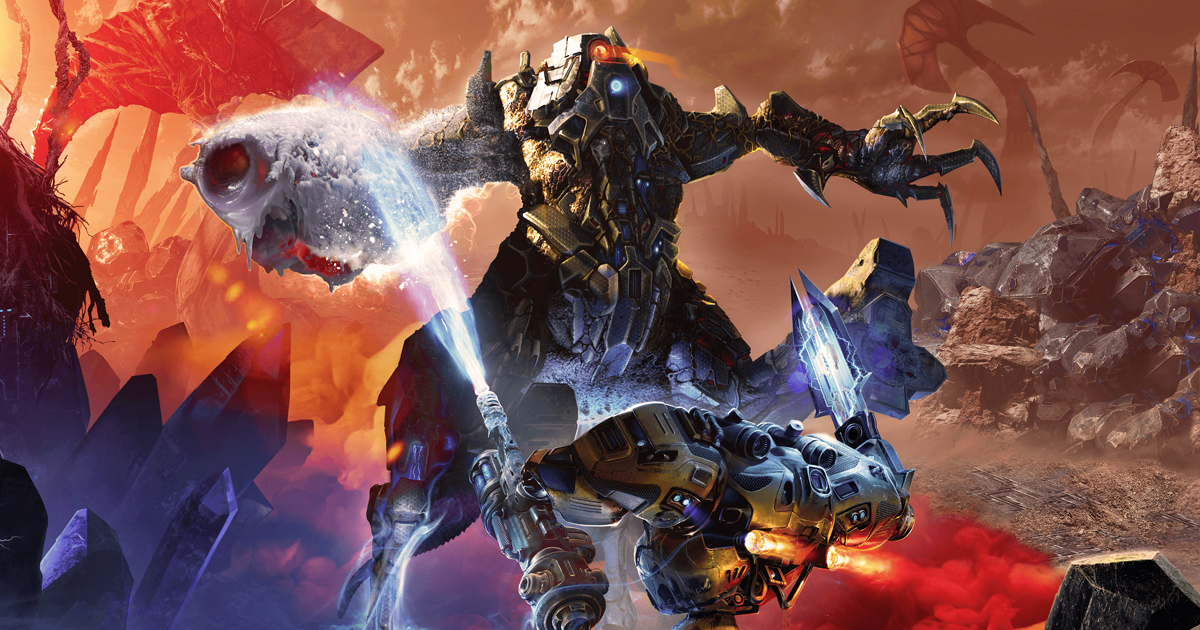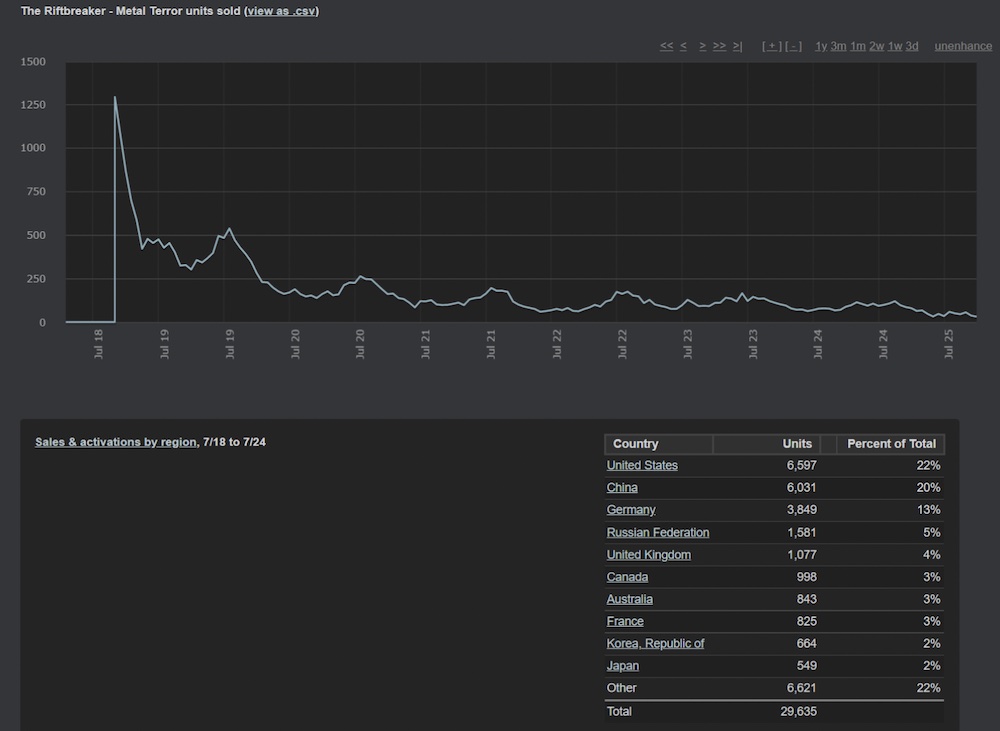Getting people hooked on your game prior to its release is the key to success. Here is how the first DLC for The Riftbreaker sold almost twice as much as the base game at launch.
What is The Riftbreaker?
- It is a base-building survival game developed by Poland-based indie team EXOR Studios.
- In The Riftbreaker, the player controls a pilot of the mecha suit, building a base and fighting hordes of enemies with an ultimate goal of returning back to Earth. The procedurally generated world also enables a high level of replayability.
- The game was destined to succeed, thanks to 250,000 wishlists generated prior to its release day.
- The studio also released a demo and a prologue, which generated 415,000 downloads combined. Despite people spending dozens (and even hundreds) of hours in the game before launch, it still managed to become a big indie hit on Steam.
- The Riftbreaker received 83/100 on Metacritic. Right now, it has a 91% rating on Steam based on almost 11,000 reviews.
DLC sales compared to the base game
Simon Carless talked to EXOR Studios co-founder Paweł Lekki about The Riftbreaker expansion for the latest episode of his GameDiscoverCo newsletter.
The Riftbreaker: Metal Terror expansion came out on July 18 at a $10 price (versus $30 for the original game). It offered a lot of new things to players, including full voiceovers, additional endings, and 20-30% new gameplay content.
Lekki expected the DLC to sell around 20,000 units on Steam in its first month and show its full potential during upcoming seasonal sales. However, Metal Terror reached 41,145 units sold in the first 30 days since its launch, compared to the base game’s 23,024 units during the same period.
The expansion has sold over 50,000 units so far, compared to the original game’s lifetime sales of 383,000 copies on Steam alone and almost 500,000 units across all platforms.
Metal Terror sales from July 18 to July 24
What are the reasons for Mass Terror’s success?
50,000 units is a huge number for an expansion to a single-player indie game. And there are several factors contributing to such results:
- EXOR tried to keep The Riftbreaker community engaged. Overall, the team has released over 15 free updates, including seasonal events and content additions;
- Core players were hyped about the first premium expansion for the Riftbreaker. As a result, Metal Terror generated 2,000 wishlists on the day it was officially announced;
- Every update, even a delay announcement, led to spikes in interest. The DLC eventually generated almost 16,000 wishlists by the day before launch;
- The 7-day conversion rate of DLC launch notifications was the biggest surprise for the team. Metal Terror had a 43.2% 7-day conversion rate, compared to the base game’s 18.6%. It also shows the huge interest from people who have added the DLC to their wishlist.
On top of that, the DLC also boosted sales of the base game, which received a 30% discount at the moment of the Metal Terror launch. “Our ‘baseline’ revenue for The Riftbreaker increased by ~2x in comparison to baseline revenue before the launch of the DLC, and our concurrent user numbers are also visibly higher, post-update,” Lekki noted.
Metal Terror serves as an example of a DLC that can not only attract new users but also make core fans spend money on additional content and improve the base game’s discoverability.


